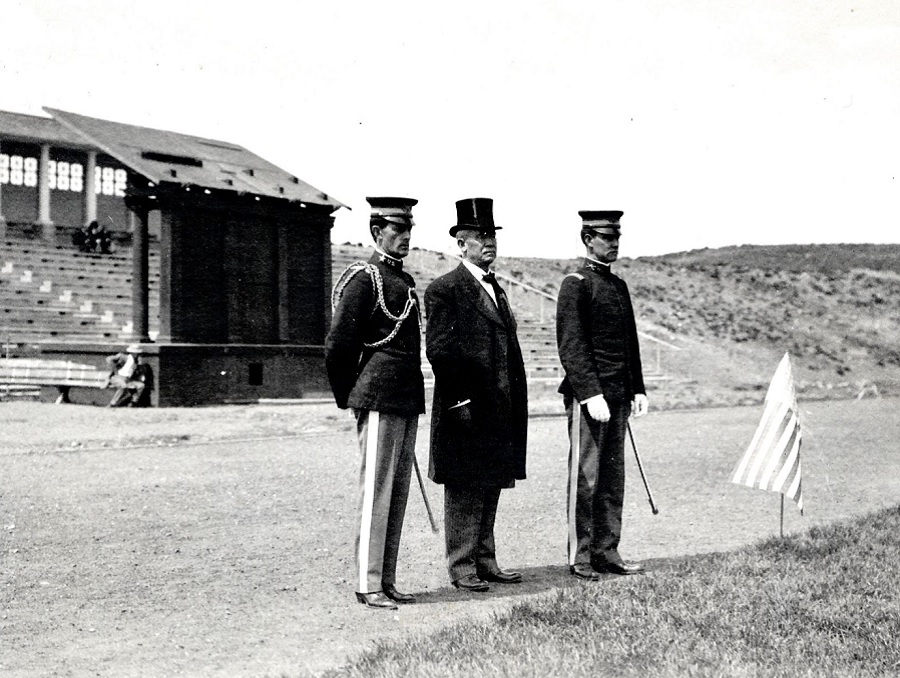During their Dec. 5-6 meeting in Las Vegas, the Nevada System of Higher Education (NSHE) Board of Regents voted to conduct a national search for the University’s next president. Their determination came in the wake of President Marc Johnson’s Oct. 31 announcement that he would be transitioning to the faculty of the College of Business at the end of June following more than eight years as the University’s 16th chief executive.
What follows is a look at how the University’s searches for president have played out over the past 40-plus years, when the terms “acting,” “interim” and “fulltime” were often applied as the searches were conducted. All quotes and information are taken from historical sources, including the University’s Oral History Program; Nevada Silver & Blue Magazine; Arkansas Gazette; Associated Press; Reno News & Review; Nevada State Journal; Reno Gazette-Journal; the University’s news website, Nevada Today; the books “The University of Nevada: A Centennial History” (1974) by James Hulse and “Better Medicine: The History of the University of Nevada School Medicine” (2003) by Phyllis Cudek and Anton Sohn; as well as minutes from several meetings of the Nevada System of Higher Education’s Board of Regents and presidential emails that were distributed to the campus.
“Acting” becomes permanent: Joe Crowley, 1978-79
Max Milam seemed like a figure out of central casting when he was named president in 1974. He replaced N. Edd Miller, who had resigned in 1973 to become president of the University of Maine at Portland-Gorham. With a scholarly shock of white hair and horn-rimmed glasses, Milam, often holding a pipe, would sometimes stare in what seemed a pensive manner during conversation.
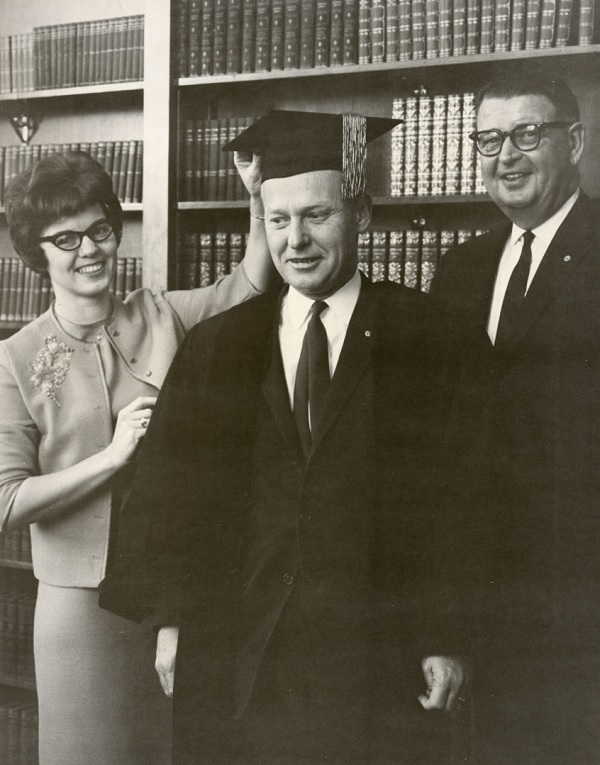
Very quickly, however, people learned both in conversation and in action that Milam wasn’t necessarily a circular thinker. If he seemed pensive, it was only momentary. Milam could be direct, and he often asked questions that required more information than most people were prepared to provide.
Milam came to Nevada following a notable career in which he had been a political science professor, then served as the director of the Arkansas Department of Administration, where he led a major reorganization of the State of Arkansas’ government under two different governors. He’d advocated for a progressive state taxation system and regional health centers while also improving the efficiency of state government. The Arkansas Gazette wrote of Milam in 1971, “Next to the governor, fiscal officer is most powerful.”
“He is not one to compromise,” said James Anderson, who served as acting president in 1973-74 before Milam was appointed president following a national search. Anderson, speaking in a 1981 University oral history, had formerly been the dean of the College of Engineering before serving as vice president for academic affairs (today known as provost). “He will spend a lot of time working on a decision, but he works hard on getting reasons for the decision. It isn’t just a whim or, ‘I think this is the way it ought to be.’
“He really works at it. It’s going to take people a little while to get used to him, I think. He has a tendency to ask rather penetrating questions fairly early on in association with individuals, as I’ve noticed, so I think people tend to put their guard up a little bit the first few times they meet him.”
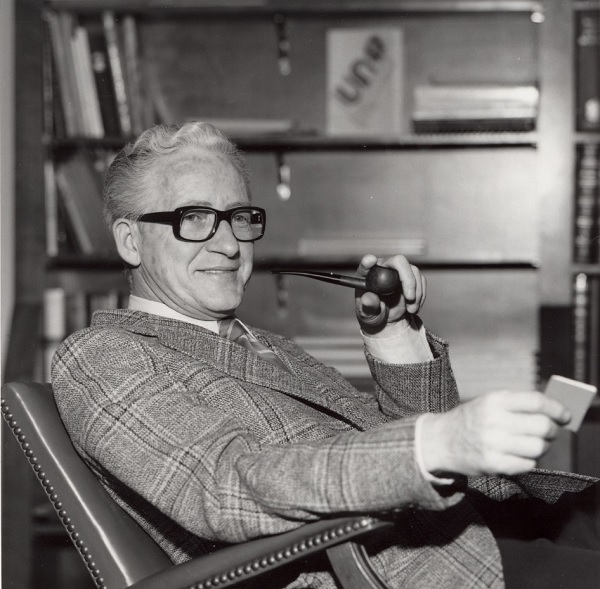
“For one reason or another, Max was perhaps more controversial than most of the presidents,” said Robert Gorrell in a 1983 University oral history. Gorrell, with a 35-year career at the University that spanned from the end of World War II until the dawn of the Reagan administration in 1980, was an award-winning English professor, dean of the College of Arts and Science, and academic vice president. “In many ways Milam … did not simply say to deans or other administrators, ‘You do what you please, and I’ll rubber-stamp anything.’ That is, he did take some positive steps, and in that process he did step on some toes.”
Perhaps the most prominent toes Milam stepped on during his four-year tenure as president belonged to the Board of Regents.
“Ultimately,” Gorrell said, “the Board of Regents, or some members of the Board of Regents, for the same kinds of reasons, did decide that they didn’t like Milam, or some of them didn’t. Those reasons varied a good deal (with) the board members, and I guess I can only guess about the kinds of politics that went on there in the Milam firing, but there was a lot of maneuvering going on.”
Milam was fired over what longtime campus Sociology Professor James Richardson, an adept observer of Nevada policies and politics for more than 50 years, called in a 1998 interview, “Five-vote politics. As long as you had five (of the then-nine-member Board of Regents) on your side for a particular day, you still had a job.”
In late 1977 and into 1978 Nevada’s system of higher education was in tumult. In the space of eight months, three top-level administrators left the university system. Chancellor Neil Humphrey resigned in September and community college division president Charles Donnelly lost his job in June when the Regents abolished the central president position of Nevada’s three community colleges. Just before Christmas in 1977, with underlying dissatisfaction with the University’s professional schools and agriculture school simmering, Milam hired Humphrey to a $3,000-per-month campus consultant position. On the morning of Feb. 10, 1978, a day when a snowstorm prevented two Regents from attending while a third was out of town for business, the Regents met at the Center for Religion and Life on the University campus (now the Our Lady of Wisdom Newman Center).
Regent Molly Knudtsen read the following statement into the record that day:
“I have become aware from several sources that the Campus atmosphere at UNR is one of unrest, tension, and disorientation to the point of adversely affecting the operation of the University and its ability to meet its responsibilities to the students and faculty. This atmosphere obviously constitutes an emergency requiring immediate action of the Board of Regents at this meeting. We cannot tolerate such an atmosphere until the next regularly scheduled meeting of the Board. I would, therefore, request that we consider the possibility of relieving UNR President Max Milam of his administrative duties as President of the University of Nevada, Reno and take whatever action is deemed necessary by the Board.”
In a roll call vote, the Regents voted 5-1 to dismiss Milam. They determined that Robert Gorrell would take over as the “Chief Campus Officer” until the next Regents meeting. Milam, who was in attendance at the meeting, then left.
The one dissenting vote came from Regent Fred Anderson, a longtime Nevada physician, who was a member of the Board of Regents for 22 years and was known as the “father” of the University of Nevada, Reno School of Medicine.
“At least one of the Regents had a personal grudge against (Milam),” Anderson, in a 1985 University oral history, recalled. “I could not see where he had done anything particularly wrong to warrant such sudden termination, and I tried to persuade the Board not to take any action.
“But by this time they were worked up to the point where they voted to request his resignation, and in fact a couple of them suggested we should fire all of the presidents at the University and get new ones. … The vote was not based entirely on the Humphrey incident – there were several of the Regents who already disliked Milam and disliked the way he was performing his duties. They thought he was too much of a businessman and not quite enough of an academic man to suit them.”
In the wake of Milam’s firing, eight campus candidates were tabbed for consideration as acting president by a 26-member campus committee chaired by Gorrell. One of the candidates was Joseph “Joe” Crowley, a well-respected faculty member since 1966, chair of the Faculty Senate in 1972-73 and head of the Department of Political Science for the previous 20 months.
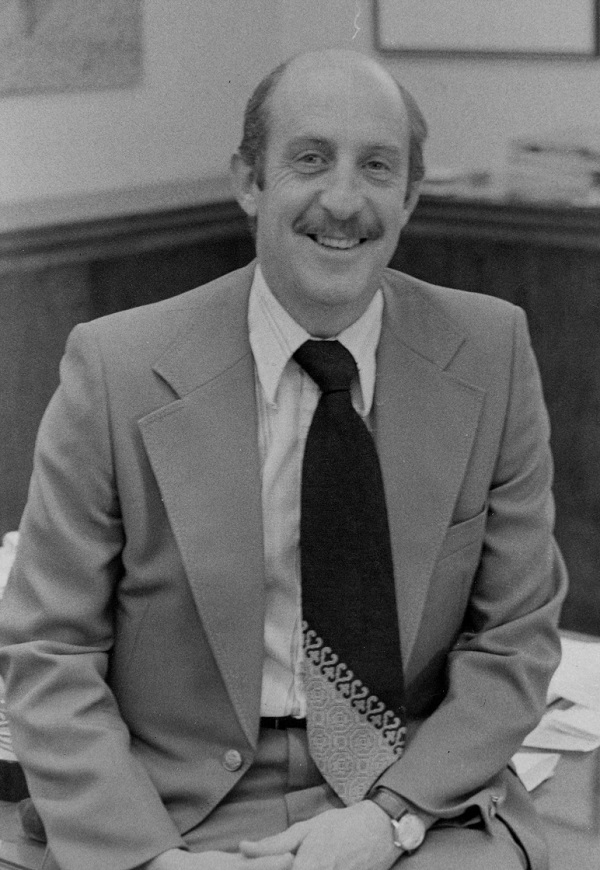
On the surface, Crowley’s candidacy to become acting president didn’t appear strong. In a 1998 interview, Crowley admitted, “It seemed like a crazy idea to me. It seemed most unlikely.”
Newspaper reports of the time circulated the names of Humphrey and former president N. Edd Miller as possible candidates for acting president. But more and more, it became apparent that the faculty supported Crowley.
“Before the deans had time to even organize (their own committee), the faculty senate had already come up with a name – Joe’s name,” Richardson said. “He was well-respected on campus, a former Faculty Senate chairman – and it turned out he was an acceptable choice to the deans.”
In a special Board of Regents meeting held on Feb. 24, 1978, one that convened at 4:10 p.m. and adjourned at 4:30 p.m., at the Center for Religion and Life, the Regents voted unanimously to appoint Crowley interim president. Plus perks, Crowley, who was appointed to serve for the 1978-79 academic year, would be paid an annual salary of $38,000.
“It was a logical move,” said James Hulse, the emeritus history professor whose “The University of Nevada: A Centennial History,” is considered the most comprehensive look at the University’s development. “The Regents made a hasty and irresponsible decision in firing Milam in the first place, and the faculty was seething.”
When it came time to pick a group of finalists for the permanent position, however, the presidential search committee omitted Crowley’s name. Crowley was told in December 1978 that although his work was appreciated, it wasn’t enough to propel his name onto the list of finalists.
Just as “five-vote politics” had played a role in Max Milam’s ouster, it also came into play for Crowley.
A newly elected group of insurgent Regents, led by wealthy casino and truck-stop owner Bob Cashell, pushed to have Crowley’s name added to the list of finalists. Other prominent members of the faculty argued in front of the search committee that Crowley deserved to be considered.
“Some of us knew that Joe knew politicians and knew how to work in that area,” Richardson said. “It would take another president two years to figure out who runs the state – figuring out what Joe already knew. Did we really want to lose another two years?”
Paul Page, then chair of the faculty senate and eventually the University’s dean of arts & science and vice president for advancement, remembered the tenor of the times and how strongly Cashell and others from the community supported a Crowley candidacy: “Bob said, ‘There are two trains coming toward each other, and I have the bigger train … and Joe’s name is going to be on that list.’”
Ultimately, the hard work of supporters such as Cashell, who would later be elected Nevada Lieutenant Governor and then City of Reno Mayor, paid off. Crowley was appointed full-time Nevada president during a meeting of the Board Regents in the Pine Auditorium of the Jot Travis Student Union on March 23, 1979.
“For three months, it was incredibly difficult,” Crowley remembered later, “just a crazy time.” Then he paused and smiled. “In retrospect,” he added with a gentle chuckle, “it was great preparation for the job.”
The search for Joe Crowley’s successor: John Lilley, 2001
On May 31, 2000, President Joe Crowley gathered his family and several members of the campus in the Clark Room of Morrill Hall. The room was named in honor of the president, Walter Clark, whom Crowley, the University’s 13th president, had eclipsed two years earlier as the institution’s longest-serving chief executive.
It was a sunny day, and outside the Quad was brilliant from recently completed Spring Commencement exercises. Crowley was 67 years old at the time. He and his family had lived for 25 years in a middle-class home in a middle-class neighborhood on Muir Drive not far from Peavine Elementary School, Rancho San Rafael Park and the University campus.
Crowley had an announcement to make. Many people assumed that the nation’s longest-serving president at a single principal public university had many more years left in him.
He announced to those in the room that he would be stepping down. He said he felt the time was right.
“I’m an academic person, a social scientist of sorts,” he said. “But I also believe in the gut. I’ve just had this growing feeling inside that the time (to step down) is right.”
For the first time since Max Milam’s tumultuous ouster in 1978, the University would be searching for a new president.
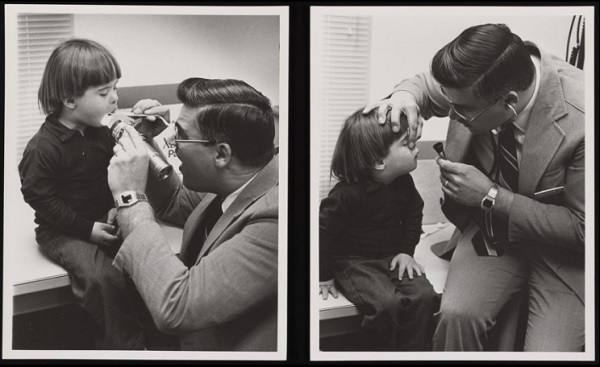
In the interim, the well-respected Stephen McFarlane, chair of the Department of Speech Pathology and vice dean of the School of Medicine, was put in charge of the University on Jan. 1, 2001, once Crowley served his final day. McFarlane explained the process in the book, “Better Medicine: The History of the University of Nevada School Medicine” (2003) by Phyllis Cudek and Anton Sohn:
“Joe Crowley announced six months before his retirement that he was leaving in December. Candidates to be interviewed for interim president were interviewed, and I didn’t submit anything to be interviewed. Several people – supposedly friends – recommended me for that position, but I didn’t go for an interview. Chancellor Jane Nichols asked me to come meet with her, Legal Counsel Tom Ray and Board of Regents Chair Thalia Dondero. … On the following Monday they offered me the (interim) position. I wasn’t particularly interested in it from the beginning because I was very happy being a clinician. The Regents approved my interim appointment at their October meeting.”
McFarlane served as interim president for six months. During that time he represented the University while the Nevada State Legislature was in session. He worked alongside Crowley, who was working as the assistant to the chancellor for legislative relations for the University and Community College System of Nevada, as well as longtime University political science professor and government affairs expert Robert Dickens. McFarlane said he found the process to finalize state budget lines for the University to be both “stressful” at times and “not stressful” at other times.
He was able to leverage Crowley’s presence and reputation on more than one occasion.
“I had quite a few legislators who had been patients of mine, and the first session I went to was a joint session of the senate and assembly,” McFarlane said. Fully understanding there were stark physical differences between him and the man he was replacing – McFarlane was burly and had a full head of dark hair, while Crowley was much leaner, his head known throughout Nevada for its grandfatherly baldness – McFarlane used these obvious contrasts to his advantage. “I made a crack about Joe Crowley being there,” McFarlane recalled. “I said, ‘I don’t want you to confuse me with Joe Crowley. I know we look a lot alike. Joe and I have the same hairstyle, but the most important thing is, I’m twice the man of Joe Crowley. I looked at his jacket size, and I can say that with some authority.’”
As McFarlane tended to the University, finalists for the fulltime position were announced. Among them were John Lilley, president of Penn State Erie, The Behrend College, and Michael Tanner, a former chancellor at the University of California, Santa Cruz.
The 62-year-old Lilley had done a remarkable job transforming his institution over more than two decades as chief executive. At Penn State Erie, Lilley had helped secure tens of millions of dollars in government funding for a research and development center. He had championed the development of “Knowledge Park” – 200 acres of campus for corporate and industrial R&D – at a time when such university/business/R&D partnerships, though common today, were only starting to take root on college campuses.
The Board of Regents unanimously chose Lilley to become the University’s 14th president on April 19, 2001 during their meeting at Truckee Meadows Community College in Reno for a variety of reasons – his track record at Penn State Erie, his ability to look ahead and plot the future, his willingness to tackle major challenges. Those who had worked with him previously said they marveled at how Lilley could think so far ahead to the future and actually make that future eventually happen.
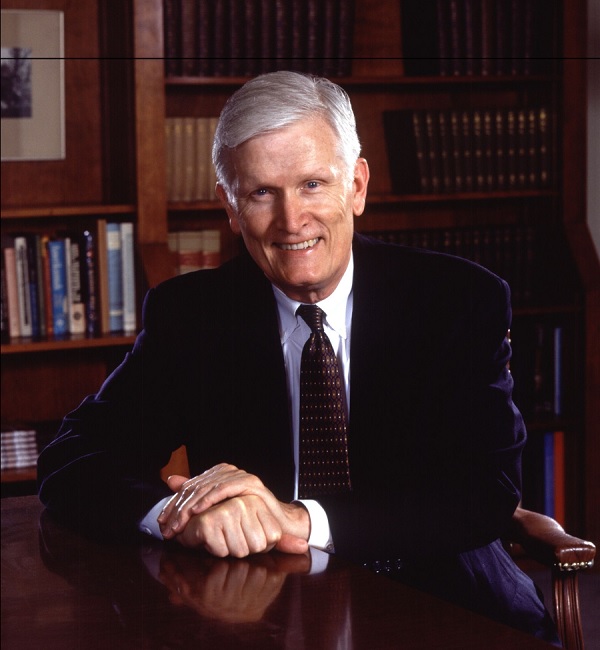
For his part, Lilley, who became the University’s 14th president on July 1, 2001, told the Reno News & Review in an interview not long after he took office that it was his job to advance the University. He sounded energized to reach out to all of the University’s constituents for their support.
“There might have been people who would have preferred a different president,” Lilley said. “That’s just a matter of choice. But I’d be very surprised if these people don’t love the university more than any different candidate.”
He added that while he had major goals in mind for the University – a strategic planning process was in in the offing, led by John Frederick, a young and energetic former chair of the Department of Chemistry who became Provost not long after Lilley took office – he had a clear culture of success in mind for the campus.
“I’m a recovering workaholic,” he said. “I’ve been substantially off the wagon for the past few weeks. Everything has to meet the test of fun. If you’re working this hard and not having fun – what is it worth?”
“Under My Hat”: Finding Milt Glick, 2006
John Lilley always talked about the profound influence Baylor University had on his life. He had grown up in Louisiana, was the son of a Baptist Minister and had received three of his degrees from the Waco, Texas institution. So when it was announced on Nov. 3, 2005 that Lilley had been elected by Baylor’s regents to head the world’s largest Baptist-affiliated university and would be leaving the University of Nevada, Reno after four years for his alma mater, the news wasn’t necessarily surprising.
Within days, the Faculty Senate recommended Dr. John McDonald, dean of the School of Medicine; Eric Herzik, political science professor; and Patricia Miltenberger, former vice president of Student Services, as possible candidates for interim president. Chancellor Jim Rogers and Board of Regents Chair Bret Whipple, along with Vice Chair Dorothy Gallagher, then met with representatives of faculty, staff and students to hear about other names to be considered.
The Associated Press quoted James Richardson about another potential interim candidate on Nov. 11: “Some of us are still hoping Joe Crowley will do it again,” Richardson said. “We would like him to take another turn at the wheel, but we’ll be looking at other names, too.”’
The Board of Regents voted during their meeting on Dec. 1, 2005 at UNLV to appoint Crowley interim president. Moments earlier during the same meeting, Crowley, who was to begin his work in the interim post on Dec. 5, 2005, listened intently as the Board of Regents approved another agenda item. This one was to name the new student union building, which was still under construction, the Joe Crowley Student Union. Executive Vice Chancellor Dan Klaich noted that, “Unless there is a miraculous performance in construction (the building eventually opened in 2007), Dr. Crowley will be gone (as interim president) before the ribbon is cut.”
Under the reassuring headline in the Nevada Silver and Blue magazine’s spring 2006 issue, “This is not permanent,” Crowley wrote with his characteristic dry humor in the president’s column, “When I recently and reluctantly agreed to spend six or seven months as interim president of the University, several friends reminded me that last time I took the interim job here I stayed for nearly 23 years. … But fear not! I will be back in the bosom of my family this coming summer, by which time the Board of Regents will have turned the job over to someone else and the individual will be called — in the common but mysterious argot of modern higher education — the ‘permanent president.’ He or she will be number 15 in the institution’s long history.”
In April, three finalists were pinpointed following work done by executive search consultant Alberto Pimentel of the firm A.T. Kearney: Marlene I. Strathe, provost at Oklahoma State University; Stephen Wells, the president of Desert Research Institute; and Milton “Milt” Glick, provost at Arizona State University.
When Glick, who had served ably as provost at one of the largest public universities in the entire country, Arizona State, for more than 15 years, interviewed on campus, his interaction with the search committee, as well as the campus as a whole, seemed to capture something special. His responses were a mix of the playful and the pragmatic. His vision for the institution was compelling. His blue eyes seemed to twinkle with possibility as he talked. His winning personality, a mix of a wise, battle-hardened major-college experience and youthful enthusiasm that seemed entirely natural, was impossible to ignore. He was 67 years old, wore a sweat-stained hat and joked that as a young man he had come to college a half-century earlier to study chemistry and “then never left.”
“He told us this was a place that was really ready to make the next step and that he was the person to help us get there,” said Mary-Ellen McMullen, past chair of the University Foundation, University alumna and member of the search committee in the fall 2006 issue of Nevada Silver & Blue.
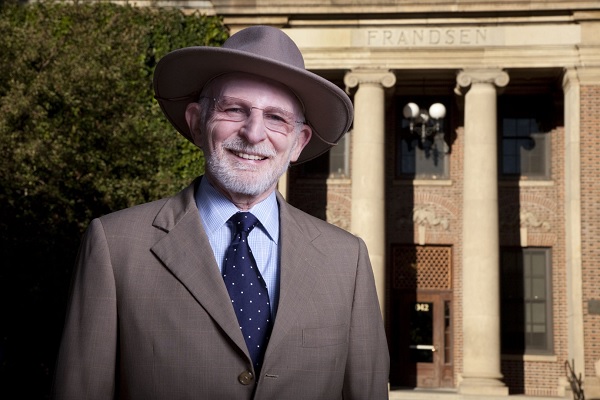
Glick’s remarks during his visit to campus in spring 2006 remain the stuff of legend. Wrote Ed Cohen in his Silver and Blue fall 2006 cover story, “Meet Milt,” which depicted how Glick, no matter the audience nor the depth of the questioning, always, seemingly, had the right answer: “They liked that answer. They liked his other answers. They liked Milt Glick so much that at the end of the interview they gave him something they hadn’t given any of the four other candidates they’d interviewed that day. A standing ovation.”
A request by Chancellor James Rogers to the Board of Regents, as recommended by the Regents’ Search Committee, to appoint Glick the 15th president of the University of Nevada, Reno was approved by the Regents during their meeting in the William Raggio Building on the morning of May 5, 2006. After introducing his wife, Peggy, to the Regents, Glick told the assembled body that the days leading to his appointment had led him to discover a community that was “ready to make things happen.” He added with a smile that he believed that “everyone is ready for the university to decide what it wants to be when it grows up.”
From that day on, Glick became known for his frank demeanor, his ever-present hat, which served as inspiration for his presidential blog, “Under My Hat,” and his ability to convey messages and goals that, although they might seem to be “stretch goals,” as he put it, were easily understood and, with enough Nevada ingenuity and teamwork, were attainable.
His vision for the University? Simple. He viewed the University as indispensable to realizing the state of Nevada’s future. On a sun-splashed day on the Quad Sept. 29, 2006, Glick, during his inauguration, sent out a memorable call to all Nevadans. They were words that perhaps conjured his own father, who was born in the mining town of McGill, Nevada, as well as echoes of a Kennedy-esque higher education call to action.
“The next Comstock Lode is not in the mines of Nevada,” Glick reminded those assembled on the Quad. “It is in the minds of Nevadans.”
“Not very fancy, but I wear well”: Johnson goes from interim to full-time president, 2011-2012
Milt Glick’s death on April 16, 2011 from a stroke sent shockwaves through the campus, northern Nevada and the entire state. Although he was 73, Glick had told friends and supporters of the University that serving into his 80s as president wasn’t a far-fetched idea. He loved the job, loved the people of the University and of northern Nevada and still had clear goals in mind for the institution’s future.
A crippling statewide recession had set the University back with hundreds of faculty and staff positions eliminated and academic programs shuttered to meet budgetary shortfalls. Yet Glick in the days before his death remained determined to rebuild and come back even stronger from what was lost.
“I wish to make clear to the campus community that we will continue to make a strong case to the Governor, the Legislature and the citizens of our state about our vital importance to the people and the economy of the state of Nevada,” he wrote to campus in an email on March 7, 2011. “We appreciate all that you, as individuals and citizens of our state, can do in this regard.
“A strong higher education system is the cornerstone by which Nevada can chart a wise and clear future, one that diversifies and improves the state’s economy.”
Glick became the first University president to die in office since Leon W. Hartman in 1943. He was remembered in the days following as a friend to all – to the faculty, staff and students of the University, to the community, to all of higher education in Nevada.
Recessionary budget cuts aside, Glick had helped lead the campus to many important institutional and reputational milestones, which included record enrollment, record National Merit Scholars on campus, record retention and graduation rates and “Top Tier” status in U.S. News and World Report rankings for the first time in University history.
During a candlelight vigil held on the Monday following Glick’s death at Lawlor Events Center, Graduate Student Association President Matt Smith summed up Glick’s legacy: “It wasn’t about him. It was about all of us. He stepped back from the spotlight, so we could all shine.”
Wrote Cheryl Hug-English, a longtime faculty member in the School of Medicine, in a poem about Glick, “Under that hat … was a man I am proud to have known.”
Marc Johnson, who was hired by Glick as provost in 2008 from Colorado State University, was named interim president in a unanimous vote by the Board of Regents on May 6, 2011.
“During our visits with the various campus constituents, it became clear to me, Vice Chair Jason Geddes and Chancellor Dan Klaich, that Dr. Johnson was the best choice to assume the UNR presidency,” Board of Regents Chair James Dean Leavitt said. “He has the experience, the knowledge and the vision to lead this university. He is the right person at the right time to continue to move UNR forward.”
The appointment of Johnson as interim president followed a series of campus meetings conducted by Klaich, Leavitt and Geddes to hear input from faculty, staff and students. During the meeting in Las Vegas where Johnson’s appointment was approved, Leavitt announced the board would initiate a national search in the fall for the fulltime position. The presidential search committee engaged the services of William Funk, president of R. William Funk & Associates, as the consultant for the search process.
On April 11, 2012, it was announced that three finalists would visit campus in the coming days to interview for the position: Steven Angle, provost at Wright State University in Dayton, Ohio; Rachel Toni Algaze Croson, division director of the Division of Social and Economic Sciences, part of the NSF’s Social, Behavioral and Economic Sciences Directorate; and Johnson.
Following the campus interviews, Johnson was identified as the “recommended finalist candidate” for the position of president during a search committee meeting on April 18, 2012, at Lawlor Events Center. The meeting was a joint gathering of the Nevada System of Higher Education Board of Regents Presidential Search Committee and an institutional advisory committee. The Presidential Search Committee included six members of the Board Regents. The Institutional Advisory Committee included 11 representatives of the community and 12 representatives of the University of Nevada, Reno faculty staff and students.
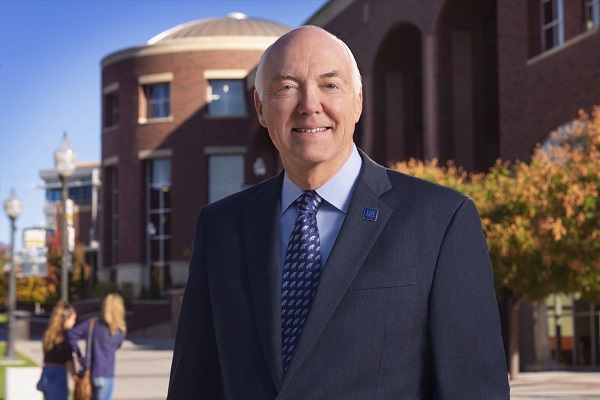
The recommendation was then forwarded to the Board of Regents for consideration at its April 20 meeting at the Desert Research Institute in Las Vegas. The months-long process had seen a field of six semifinalists narrowed to three finalists to the “recommended finalist” Johnson.
During the meeting, Regent Rick Trachok recalled a comment Johnson had made during his on-campus interview earlier in the week, where Johnson had compared himself to a suit: “I’m not very flashy … but I wear well.”
Trachok said flashiness and effectiveness are sometimes confused.
“He says he’s not very flashy,” Trachok said of Johnson. “I take that as a positive. He is who he is.”
“The best president I’ve ever seen at the University of Nevada, Reno was Joe Crowley,” added Geddes, himself a former University student body president. “When we got through the interview process, Marc Johnson was my Joe Crowley.”
During the public comment prior to the Regents’ decision, several individuals from both northern Nevada and southern Nevada expressed their admiration for Johnson’s ability to help heal the institution following four years of budget cuts, the tragic loss of a leader and to instill a vision for the University’s future.
One of the public commenters, speaking from Reno, was Joe Crowley.
“I do have a decent idea of what it takes to be a successful president,” Crowley said, noting that he had been associated with the University for 46 years and had served as president for “almost 24 years.” “I can tell you Marc Johnson is absolutely the right choice for this institution at this most critical time.”
Another public commenter was Reno Mayor Bob Cashell, who said of Johnson, “He’s gotten involved with the community. He tells us what’s going on at the University, and that really helps us stay in tune with what’s going on. We really need the leadership of Dr. Johnson.”
Following the Regents’ approval, by a 9-0 vote with three abstentions and one Regent absent, of Johnson as the University’s 16th president, Johnson said, “I will give you my tireless effort to continue the momentum that this University has made. We’ll make you proud.”
On Oct. 31, 2019, Johnson, following more than eight years as president, announced that he would make the transition to the faculty in the College of Business’ Department of Economics at the end of June.
Johnson wrote in his announcement, “From my first day on the job, I’ve always felt that the president of the University of Nevada, Reno has special responsibilities, not the least of which is to serve as a steward for this incredible institution. There comes a time for all who serve in this role to decide when is the most appropriate time for the University to find a new steward. Now is that time. The people of our University have achieved at historic and record-setting levels in practically every area of the life of our institution. It is with profound and everlasting gratitude to our people that I make this decision.
“Serving as the president of the University of Nevada, Reno has been the responsibility of a lifetime for me. I am extremely proud of where our University is today. Equally as important, I am excited about what the future holds for the next steward of this uncommonly vital, historically vibrant asset we hold in trust for the people of Nevada.”
